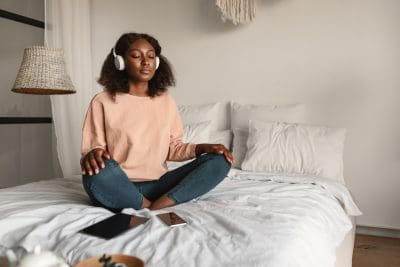As the new year begins, many people seek ways to enhance their mental clarity, creativity and emotional well-being. Journaling is one such tool that has stood the test of time, offering a versatile way to reflect, plan and grow. But not all journaling is the same. Experimenting with different styles can help you discover what resonates most with your personality and goals. Here are five unique forms of journaling to consider as you set your intentions for the year ahead.
1. Bullet journaling
Bullet journaling is a highly customizable system that combines elements of a planner, diary and to-do list. Created by Ryder Carroll, this method is ideal for those who crave organization and structure.
How to start:
- Use a dotted or grid notebook to create your layouts.
- Incorporate symbols like dots, circles and dashes to categorize tasks, events and notes.
- Customize spreads to include habit trackers, goal-setting pages and mood logs.
Why try it: Bullet journaling is excellent for keeping track of multiple aspects of your life in one place. It can help you identify patterns, stay organized and maintain focus on your goals.
2. Morning pages
Made popular by Julia Cameron in her book The Artist’s Way, Morning Pages are a stream-of-consciousness journaling practice designed to clear mental clutter and boost creativity.
How to start:
- Write three pages of longhand, unfiltered thoughts first thing in the morning.
- Avoid overthinking or editing as you write.
- Use the process as a brain dump rather than a structured journal entry.
Why try it: Morning Pages are therapeutic and freeing. They help you process emotions, clear mental blocks and unlock creative ideas.
3. Gratitude journaling
Gratitude journaling focuses on acknowledging the positive aspects of your life. It’s a simple yet powerful practice to cultivate a mindset of abundance and contentment.
How to start:
- Dedicate a few minutes daily to write down three to five things you’re grateful for.
- Be specific. For example, instead of writing “friends,” jot down, “Lunch with Sarah where we laughed about old times.”
- Reflect on why each entry matters to you.
Why try it: Practicing gratitude can improve your mood, reduce stress and enhance overall well-being. It’s a great way to shift your focus from what’s lacking to what’s thriving.
4. Art journaling
Art journaling combines visual art and writing to create a multi-dimensional expression of your thoughts and emotions. This method is perfect for those who enjoy creativity and self-expression.
How to start:
- Gather materials like sketchbooks, markers, watercolors and collage supplies.
- Use prompts or freeform inspiration to create pages that blend images and text.
- Don’t worry about perfection; focus on the process.
Why try it: Art journaling encourages you to think outside the box, reduce anxiety and explore feelings that might be hard to express in words alone.
5. Reflective journaling
Reflective journaling focuses on self-exploration and personal growth by encouraging you to delve deeper into your thoughts, behaviors, and experiences.
How to start:
- Choose prompts like “What did I learn about myself today?” or “What challenges am I currently facing, and how can I overcome them?”
- Write regularly, aiming to explore your feelings and insights in detail.
- Use your reflections to identify patterns or areas for improvement.
Why try it: This form of journaling fosters self-awareness and emotional intelligence, making it a powerful tool for personal development.
Tips for successful journaling
Regardless of which method you choose, consistency is key. Here are a few tips to help you build your journaling habit:
- Start small: Dedicate 5-10 minutes a day to your chosen practice.
- Choose the right tools: Use a notebook or app that you enjoy working with.
- Be patient: Don’t expect immediate results; journaling is a process that unfolds over time.
- Create a routine: Pair your journaling with another daily habit, like having your morning coffee or winding down before bed.
Getting started with journaling
The beauty of journaling lies in its flexibility. Whether you prefer the structured approach of bullet journaling or the freeform creativity of art journaling, there’s a style out there to suit your needs. Experiment with these five methods to discover which one resonates with you, and make journaling a cornerstone of your personal growth in the year to come.














